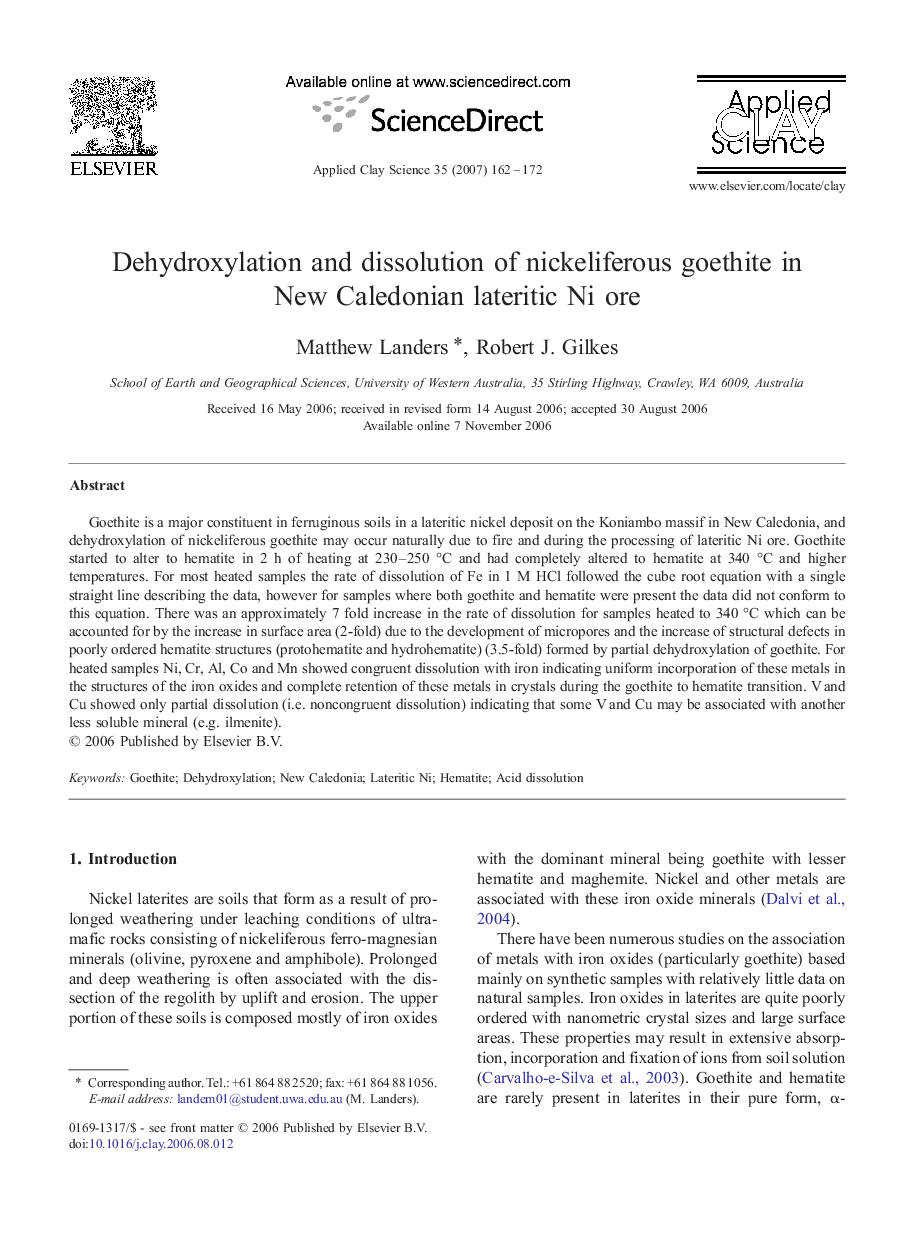| Article ID | Journal | Published Year | Pages | File Type |
|---|---|---|---|---|
| 1696602 | Applied Clay Science | 2007 | 11 Pages |
Goethite is a major constituent in ferruginous soils in a lateritic nickel deposit on the Koniambo massif in New Caledonia, and dehydroxylation of nickeliferous goethite may occur naturally due to fire and during the processing of lateritic Ni ore. Goethite started to alter to hematite in 2 h of heating at 230–250 °C and had completely altered to hematite at 340 °C and higher temperatures. For most heated samples the rate of dissolution of Fe in 1 M HCl followed the cube root equation with a single straight line describing the data, however for samples where both goethite and hematite were present the data did not conform to this equation. There was an approximately 7 fold increase in the rate of dissolution for samples heated to 340 °C which can be accounted for by the increase in surface area (2-fold) due to the development of micropores and the increase of structural defects in poorly ordered hematite structures (protohematite and hydrohematite) (3.5-fold) formed by partial dehydroxylation of goethite. For heated samples Ni, Cr, Al, Co and Mn showed congruent dissolution with iron indicating uniform incorporation of these metals in the structures of the iron oxides and complete retention of these metals in crystals during the goethite to hematite transition. V and Cu showed only partial dissolution (i.e. noncongruent dissolution) indicating that some V and Cu may be associated with another less soluble mineral (e.g. ilmenite).
